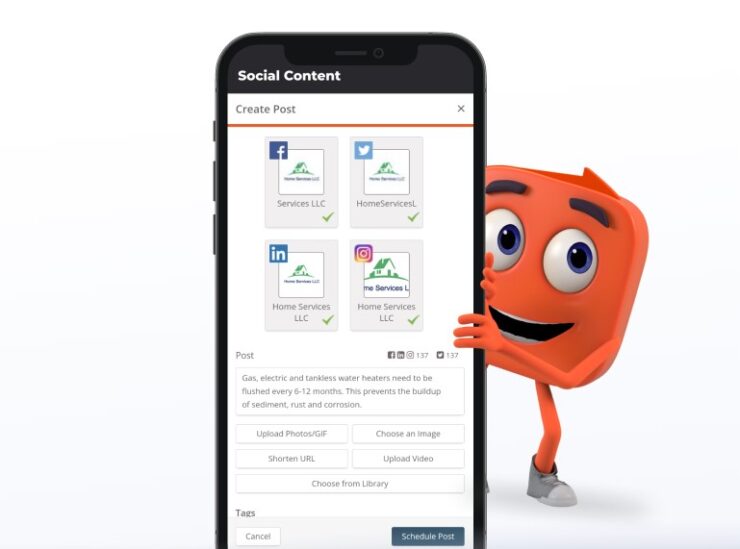Small businesses represent the heartbeat of America, and they often run a tight ship, with team members pulling double duty. While the hustle of entrepreneurship is admirable, it can cause burnout and result in lags in service and quality.
Thankfully, with today’s technology, tools, and strategies, small businesses can improve their communication inside and out. Improve your small business’s communication effectiveness and speed with these tips and techniques. With a more effective approach to communication, you can improve your company’s reputation, growth potential, and employee retention.
1. Leverage Technology and Build Automations

Your desks at the office aren’t topped with typewriters but your communications tools might be just as out of date. Modern software and technology stacks can help you deliver excellent customer service and quality faster and more efficiently.
A do-it-all small business software suite centralizes your communications tools in one place, reducing complexity and endless logins. Teams can manage inquiries from social and email channels, chat with each other, and manage customer web chats. Small business social media management is made easier as well. With fewer clicks and tabs separating them from serving customers, they can work quickly and get into a flow state.
This type of technology can easily improve customer service, but it’s great for teams, too. When you invest in tech that helps them do their jobs better, employees are more satisfied. They’ll spend less time coordinating inquiries and will have more time for creative work that leverages their talent.
This technology stack also improves inclusivity in both ability and preferences for employees and customers. Web chat reduces friction for customer inquiries and increases access for those with less available time. Voicemails with transcription help improve message clarity and improve access for those with varied abilities.
Design automations that respond to common inquiries immediately to deliver answers even when you’re offline. Schedule automatic responses to set expectations for inquiries demanding a more custom response. Your client will appreciate the candor and you can delight them when you follow up in alignment with your promise.
2. Focus on Clarity and Conciseness
Your company already has a tone, but it’s up to you to decide if it’s the right one. Your industry may have common jargon, terms, or acronyms, but it may not be part of your customer’s vocabulary. Similarly, it can also create unnecessary roadblocks for your new hires to be out of the loop on your language.
Take several steps back and consider what your company’s cultural norms are, setting aside judgment for another day. Observe how your team speaks with one another and with customers, taking notes as you go. Next, review customer feedback and employee surveys to determine if your communication norms cause any confusion.
If your research reveals opportunities for improvement, work with your team leaders to create an updated approach. Discuss the issue with ambiguity and its tendency to lead to misunderstandings. When communication is unclear, the message recipient is left to guess and, if they’re wrong, it can have damaging results.
Clarify company acronyms, terms, and brand names to ensure everyone is on the same page. Create an internal dictionary and use it to train new team members so they are informed in orientation, not over time. This way, you’ll reduce the likelihood of a game of telephone where the true meaning is lost with each translation.
Bring in a communication consultant to train all team members on clear and effective communication. Prioritize candid conversations and productive debate at all levels, which can improve clarity and problem-solving. Be direct in how your team sets expectations, identifying metrics, deadlines, and results.
3. Establish a Process for Managing Feedback

Your customers may be screaming for what they want in the comments section, but if you’re not listening, prepare to fail. Review your current communication channels and identify where clients can provide feedback and its current routing process. Do the same with internal channels, like surveys and exit interviews as well as external review sites.
Next, unearth any existing processes for how feedback is handled. Many companies have regular satisfaction surveys, but if the data sits locked in a PowerPoint presentation, you’re wasting your time.
Encourage regular feedback sessions among your team, reassuring them that their honesty is needed to improve the business. Hold to this promise, as some people may be concerned with retaliation. Keep an open mind to tough feedback and commit to considering all forms of it as you build a culture of continuous improvement.
Lead the way by offering what you can do better, showing your team that you can be vulnerable and self-aware. Share a story to bring the message home and then keep the team updated on what you’re doing to improve.
Do the same with customer feedback and respond to comments instead of ignoring or deleting them. If a customer’s post is harsh yet honest, keep it up and respond to it genuinely. Acknowledge your receipt of their feedback and take the conversation offline to resolve it.
Build a feedback response process that establishes a timeline for response, resolution, and retention. Tag key team members to serve on the response team and treat them as the high-performers they are. Empower them to respond to client concerns, resolve them, and propose solutions to reduce future issues.
Effective Communication Sets Your Small Business Apart

Your company’s success depends on how well you communicate, no matter your industry, customer base, or location. Blend modern technology with behavioral science best practices and prioritize respect and candor. When you do, your customers will feel heard and served and your employees will feel respected and empowered.
Focus on building effective processes and utilizing technology to supercharge your team’s capabilities. Together, your streamlined communications will enhance collaboration, improve satisfaction, and drive growth for your business.

